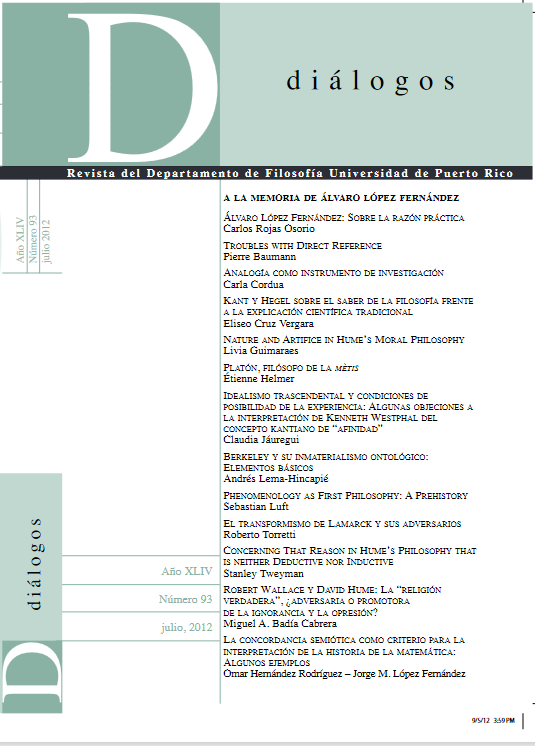Resumen
Estudio de dos ejemplos de cómo la concordancia semiótica entre signos y significados matemáticos propios de la segunda mitad del siglo XVII puede servir para delatar vicios en la didáctica del cálculo.
Citas
Berkeley, G. (1992). De Motu and The Analyst: A Modern Edition with Introductions and Commentary. D. Jesseph (trans. and ed.). Dordrecht, The Netherlands: Kluwer Academic Publishers.
Bressoud, D. M. (2011). Historical reflexions on teaching the fundamental theorem of integral calculus. American Mathematical Monthly, 118 (9), 99-115.
Cauchy, A. L. (1899). Résumé des Leçons Données a L‘ Ecole Royale Polytechnique sur Le Calcul Infinitesimal, Série II, Tome IV, Å’vres Complétes.
Child, J. M. (1916). The geometrical lectures of Isaac Barrow, translated with notes and proofs, and a discussion on the advance made therein on the work of his predecessors in the infinitesimal calculus. (No. 3). Chicago, IL: Open Court.
Dunham, W. (2005). The Calculus Gallery. Masterpieces from Newton to Lebesgue. Princeton, NJ: Princeton University Press.
Euler, L. (1748). Introductio in analysin infinitorum Vol 1 (Introducción al análisis del infinito Vol 1, Edición Facsimilar, Sevilla: SAEM Thales-Real Sociedad Matemática Española.
Euler, L. (1748). Introductio in analysin infinitorum Vol 2 (Introduction to the Analysis of the Infinite, Book II). 1990, New York: Springer Verlag.
Euler, L. (1755). Institutiones calculi diferentialis. (Foundations of Differential Calculus). 2000, New York: Springer Verlag.
Guicciardini, N. (2009). Isaac Newton on mathematical certainty and method. Cambridge, MA: The MIT Press.
Hall, A. R. (1980). Philosophers at War: The quarrel between Newton and Gottfried Leibniz.Cambridge, MA: University Press.
Kitcher, P. (1984). The Nature of mathematical knowledge. New York, NY: Oxford University Press.
Körner, T. W. (2003). A Companion to Analysis: A Second First and First Second Course in Analysis. Graduate Studies in Mathematics. Providence, RI: American Mathematical
Society.
L‘Hospital, G. F. A. (1696). Analyse des infiniment petits, pour l‘intelligence des lignes courbes. Paris, France: LÍmprimerie Royale.
Lagrange, J. L. (1797). Théorie des fonctions analytiques. Paris : L‘Imprimerie de la république.
Laubenbacher, R., & Pengelley, D. (1999). Mathematical expeditions, chronicles by the explorers. New York: Springer Verlag.
Newton, I. (1686). Mathematical Principles of Natural Philosophy and System of the World, Vols 1 y 2 (Traducción de Andrew Motte, 1729). Berkeley, CA: University of California.
Robinson, A. (1966). Non-standard analysis, Amsterdam, The Netherlands: North-Holland Publishing Co.
Santiago, C. I. (2008). Los números hiperreales y la comprensión del concepto de derivada de una función en el curso de cálculo. Disertación doctoral, Facultad de Educación, Universidad de Puerto Rico, Río Piedras, PR.
Saussure, F. (1974). Cours de Linguistique Générale. C. Bailly and Albert Séchehaye (eds.) with the collaboration of A. Riedlinger. Paris: Payot.

Esta obra está bajo una licencia internacional Creative Commons Atribución-NoComercial 4.0.

